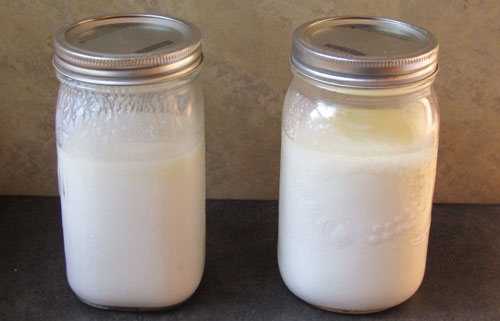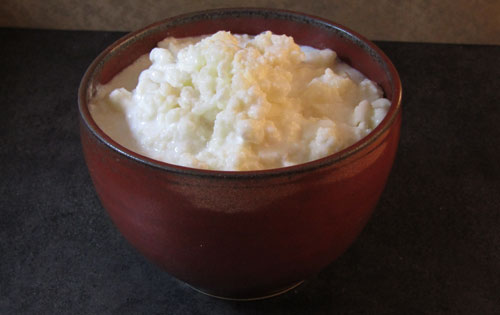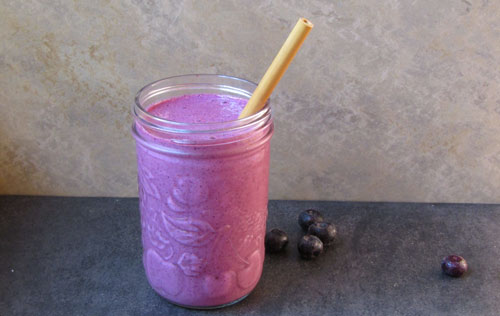This post contains affiliate links.
When you first start making kefir you may find that your grains seem to take a long time to start to grow. Each time you use them they may get a little larger or more abundant but it doesn’t seem to be very fast. Until one day when you go to strain your grains and find you only get half a jar of kefir rather than the usual amount.
It is then that most people realize that they have a few too many kefir grains. It gets even worse if you start storing grains in the fridge while you use other grains to make your kefir. It can eventually get to the point where you have more grains than anyone could ever use.
So what do you do with all those grains? Here are a few Ideas which could keep your grain collection under control.
Make more kefir

When you first started making kefir you probably had bought kefir from the store and used it sparingly. Once you start making your own you have the opportunity to make as much (or more) kefir then you can consume with the regular methods you had when you were buying it from a grocer.
If you want to try using kefir in other recipes this is an opportunity for you to increase your production. You can increase production simply by upgrading the size of your container. This will lower the ratio of kefir to milk and at the same time you will produce additional kefir on a daily basis.
There are lots of ways to use this extra kefir so if you find yourself with a fridge full of jars of slowly fermenting kefir try using some to make kefir cheese, smoothies and baked goods.
Your other option is to use the extra grains to make kefir with different types of milk. This way you can experiment with making goat’s milk kefir or kefir with a high fat milk content like table cream without risking your normal kefir supply.
Kefir made with goat’s milk is great for making salad dressings or creamy goat cheese. Kefir made with table cream makes a great ice cream or a topping for fresh fruit.
Make nut or seed kefir
Making kefir from nut and seed milks is another option if you want to try a truly lactose free kefir.
Kefir grains feed on some type of sugar and protein which is perfect for making nut or seed kefir as there is sugar and protein in the nuts or seeds. You may have to add additional sugar depending on how tart you like your kefir. If you want to continuously make this type of kefir you will have to ferment some milk with the grains weekly to keep the grains healthy.
The kefir will have a different texture but it will acidify and have less sugar in it then the nut or seed milk did before fermentation.
Store some for later use
Although kefir grains are hardy and strong they are still collections of living bacteria and yeasts which need regular feeding and care.
It can happen that life gets in the way of making kefir and your grains may suffer from neglect and die. If that happens it would be good if you have saved some for later use, then you will have a backup set of grains.
There are basically two methods of storing kefir grains for long term storage
Dehydrate the grains
The cultures in the grains need liquid to multiply and grow. If the water is removed from the grains the cultures will become dormant and require little energy to maintain a viable culture.
If you purchased a packet of kefir grains this is how they were shipped to you. The culture company dehydrated some kefir grains added some powdered milk to maintain any active cultures in the grains and packaged them in air tight packets.
You can do the same thing to save some of your extra grains.
The easiest way to do this is with a food dehydrator. Spread the grains out onto a tray and set the temperature at low. You want to drive the water out not cook the grains so take your time. It may take up to 2-3 days depending on the size of the grains you are dehydrating.
Once they are dry and hard package them in a glass jar with some powdered milk. Store them in the fridge until you want to begin making kefir again.
Freeze the grains
To freeze your extra grains all you need to do is to pat dry some kefir grains, add some powdered milk and place the grains in a plastic bag. Put them in the freezer. It is best to remove as much of the air from the bag as possible and to store the grains in a deep freeze which keeps the grains below 10 degrees Celsius.
Normal frost free freezers tend to cycle the temperature up and down as they defrost. This can reduce the viability of the kefir grains over a longer period of time.
To reactivate your spare grains simply add the grains to a small amount of milk and leave them to rehydrate/thaw for 24 hours. Strain out the grains and repeat the feeding until the milk starts to thicken. You can now slowly increase the amount of milk the grains are fed until you are back up to making the amount you need daily.
Add them to smoothies
Some people find the grains slimy and unappetizing but they are completely edible and are actually made up of three basic ingredients:
- Polysaccharides
- Lipids
- Proteins
These make great additions to any healthy smoothie drink.
Many people add protein powders which contain all three of these ingredients. If the powder is made from whey it is made up of basically the same ingredients.
Whey is the liquid which is produced in making cheese and is then dehydrated and packaged in a powder form. The process uses industrial machinery, transport trucks and a fair amount of energy. Not to mention the addition of plastic packaging to make it look good.
The kefir grains are simply packaged in a semi-solid form require no industrial machinery or transport so don’t be so picky. With a high powered blender you will never be able to taste a difference.
Give them away
Kefir grains were a closely guarded secret which did not promote freely giving them to anyone. They were thought to become less effective when they were given to others as if the magic of the grains was diluted when they were passed on to others.
Today we know better. Instead having a giving attitude is a healthy practice, it promotes a healthy perspective and better overall mental health.
There are lots of people who would love to try making kefir from kefir grains. Why not ask around and see who in your circle of friends would like to try it. You will be surprised to find how many are interested.
Use them for baking
The cultures in the grains are surprisingly similar to those found in sourdough starter.
Sourdough starter is made up of a collection of lactic acid bacteria and yeasts which both acidify the dough and consume some of the sugars forming CO2 gas which causes the bread to rise.
Kefir grains also contain a collection of lactic acid bacteria and yeasts which acidify the milk and consume some of the sugar (lactose) in the milk.
The cultures do not care where they get their food from so they will grow just as well mixed into flour and water to make a quick sourdough starter. Just add some water and flower to the grains and blend them in a high powered blender. Let the culture grow for 24 hours or so until it is fermenting actively.
Once it is actively fermenting you can use it to make sourdough bread. You can keep some back and feed it if you want to repeat the process again or use it all and make new when you are ready for more sourdough.
They can also be added to non-leavened bread recipes which helps them to rise more and be fluffier. This is due to the acidic makeup of the grains reacting with the baking soda/powder. They can also be used instead of kefir in this recipe for almond nut waffles for all those who can’t have gluten or are avoiding carbohydrates
As you can see there are numerous ways to use those extra kefir grains so don’t waste them, use them. On the other hand if you find kefir grains to be bothersome you could try making yogurt instead. Although there are not as many probiotic strains in yogurt but they still have a positive effect on digestion. For more on the differences between yogurt and kefir check out this article.



